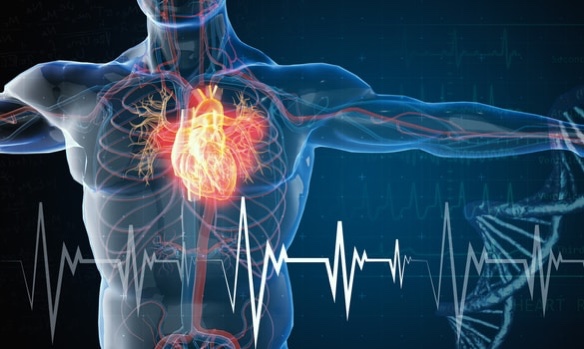- All Plans
- Yahoo Press Release
- Bloomberg Press Release + Yahoo Finance
- Business Insider Press Release
- Benzinga Press Release
- Digital Journal Press Release
- US Times Now Press Release
- AP News Press Release
- Yahoo Finance Press Release
- Street Insider Press Release
- MSN News Press Release
- USA Today Press Release
Acute Aortic Syndrome – Recognition in Primary Care and Treatments


Singapore, 27th Oct 2023, King NewsWire – Acute aortic syndrome is a collection of life-threatening aortic conditions that demand immediate medical attention, encompassing aortic dissection, aortic intramural hematoma, leaking aortic aneurysms, and penetrating atherosclerotic ulcers. This article provides a comprehensive overview of these conditions, focusing on their clinical presentations, diagnosis, and treatment options.
Introduction:
Acute aortic syndrome is an umbrella term for several aortic diseases, including aortic dissection, aortic intramural hematoma, leaking aortic aneurysms, and penetrating atherosclerotic ulcers. These conditions share similar clinical presentations and symptoms, necessitating prompt medical intervention.
Epidemiology:
The incidence of aortovascular diseases has been increasing over the years, primarily due to the aging population and the use of surveillance scans. Patients affected by these conditions are often elderly, male, smokers, and have a history of hypertension. Rare cases involve individuals with connective tissue disorders, bicuspid aortic valves, or annuloaortic ectasia.
Clinical Presentation and Diagnosis:
One of the hallmark symptoms of acute aortic syndrome is an acute tearing chest pain, which may radiate to the back. The location of the pain correlates with the affected region of the aorta. For instance, anterior chest pain or pain in the neck and jaw typically indicates ascending aortic involvement, while pain in the back and abdomen suggests descending aortic pathology. Hypertension is a common finding, and hypotension is a worrisome sign that can signal an imminent risk of death.
Diagnostic tools include chest X-rays, computed tomography (CT) imaging, magnetic resonance imaging (MRI), transesophageal echocardiography, and transthoracic echocardiography. Chest X-rays often reveal a widened mediastinum, while CT imaging offers high sensitivity and specificity, making it a valuable diagnostic tool. However, alternative imaging methods like MRI and transesophageal echocardiography may not be readily available in all healthcare centers.
Treatment Options:
The choice of treatment is determined by the specific aortic pathology. Not all cases require immediate intervention, and in mild cases, patients may be monitored through serial scans. Blood pressure control is an essential aspect of management, as it can help slow the progression of the disease. Additionally, quitting smoking can significantly benefit the patient’s condition.
For cases of acute aortic syndrome involving the ascending aorta, emergency high-risk open surgery is the preferred treatment. This surgical procedure includes deep hypothermic circulatory arrest, which involves cooling the body to induce hypothermia. During this period, blood circulation and brain function are temporarily halted, allowing surgeons to excise the affected ascending aorta and suture in a synthetic graft. This technique extends the safe duration of blood circulation cessation, reducing the risk of brain injury.
For acute aortic syndrome that spares the ascending aorta, patients may be treated with medical therapy. In the past, high-risk conventional open surgeries were the primary option for these cases. However, modern medicine has introduced an alternative approach known as thoracic endovascular aortic repair (TEVAR) for a select group of patients. TEVAR offers a less invasive option compared to conventional open surgery.
In conclusion, acute aortic syndrome comprises a range of life-threatening aortic conditions, each with distinct clinical presentations, diagnostic methods, and treatment options. The critical nature of these conditions underscores the need for rapid diagnosis and timely intervention to improve patient outcomes. Understanding the variety of presentations and treatment strategies can help healthcare professionals address these cardiovascular emergencies effectively and provide the best possible care for affected individuals.
Written by Clinical Assistant Prof. Sivaraj Pillai Govindasamy, Consultant Cardiac Surgeon, Department of Cardiothoracic Surgery at the National Heart Centre in Singapore.
Clinical Assistant Prof. Sivaraj Pillai Govindasamy serves as a Consultant Cardiac Surgeon within the Department of Cardiothoracic Surgery at the National Heart Centre in Singapore. He received his MBChB degree from the University of Glasgow in 2008, a prestigious institution known for its top-tier medical education at the time. His journey in cardiothoracic surgery training culminated in 2018, a culmination marked by his successful completion of postgraduate examinations, earning him the titles of MRCS from the Royal College of Surgeons Edinburgh in 2014 and FRCS in Cardiothoracic Surgery from the same institution in 2018.
In 2019, Prof. Govindasamy was appointed as a Cardiac Surgeon at the National Heart Centre Singapore, where his contributions to the healthcare sector were recognized with a 10-Year Long Service Award in 2019, a Bronze Award for Service Quality in 2020, and a Silver Award for Service Quality in 2022.
His dedication to his field was further acknowledged with a Training Scholarship for Specialist Training in Cardiothoracic Surgery, a prestigious honor awarded by the Ministry of Health in Singapore. His pursuit of excellence led him to a year-long fellowship in aortic surgery at Liverpool Heart and Chest Hospital from 2022 to 2023. In addition to his clinical work, Prof. Govindasamy fulfills multiple roles, including serving as a Clinical Assistant Professor at Duke-NUS Medical School since 2022, a Physician Faculty Member for the SingHealth Cardiothoracic Surgery Residency Programme since 2019, and a Clinical Teacher at NTU Lee Kong Chian School of Medicine.
The National Heart Centre Singapore is dedicated to delivering exceptional cardiovascular care, conducting groundbreaking research, and providing education to medical professionals. The institution heavily relies on its dedicated workforce to ensure the highest level of patient care.
Recognizing the continuous operation and the dedication of its staff, NHCS has developed a Work-Life strategy to help team members effectively balance their professional and personal commitments. This approach ensures that the staff remains engaged, fostering a caring workforce that significantly contributes to the excellent level of patient service NHCS offers.
NHCS continues to uphold its commitment to advancing medical innovation, leading the way in the adoption of state-of-the-art cardiac technologies in Singapore, further solidifying its reputation as a pioneer in the field.
For more information about the National Heart Centre Singapore, please visit https://www.nhcs.com.sg/.
Explore exciting career opportunities at NHCS by visiting https://www.nhcs.com.sg/careers/job-opportunities.
For the full article on “Acute Aortic Syndrome – Recognition in Primary Care and Treatments” by Clinical Assistant Prof. Sivaraj Pillai Govindasamy, please click here.
Media Contact
Organization: National Heart Centre Singapore
Contact Person: Sivaraj Pillai Govindasamy
Website: https://www.nhcs.com.sg/profile/sivaraj-pillai-govindasamy
Email: sivaraj.pillai.govindasamy@singhealth.com.sg
City: Singapore
State: Singapore
Country: Singapore
Release Id: 2710237392
